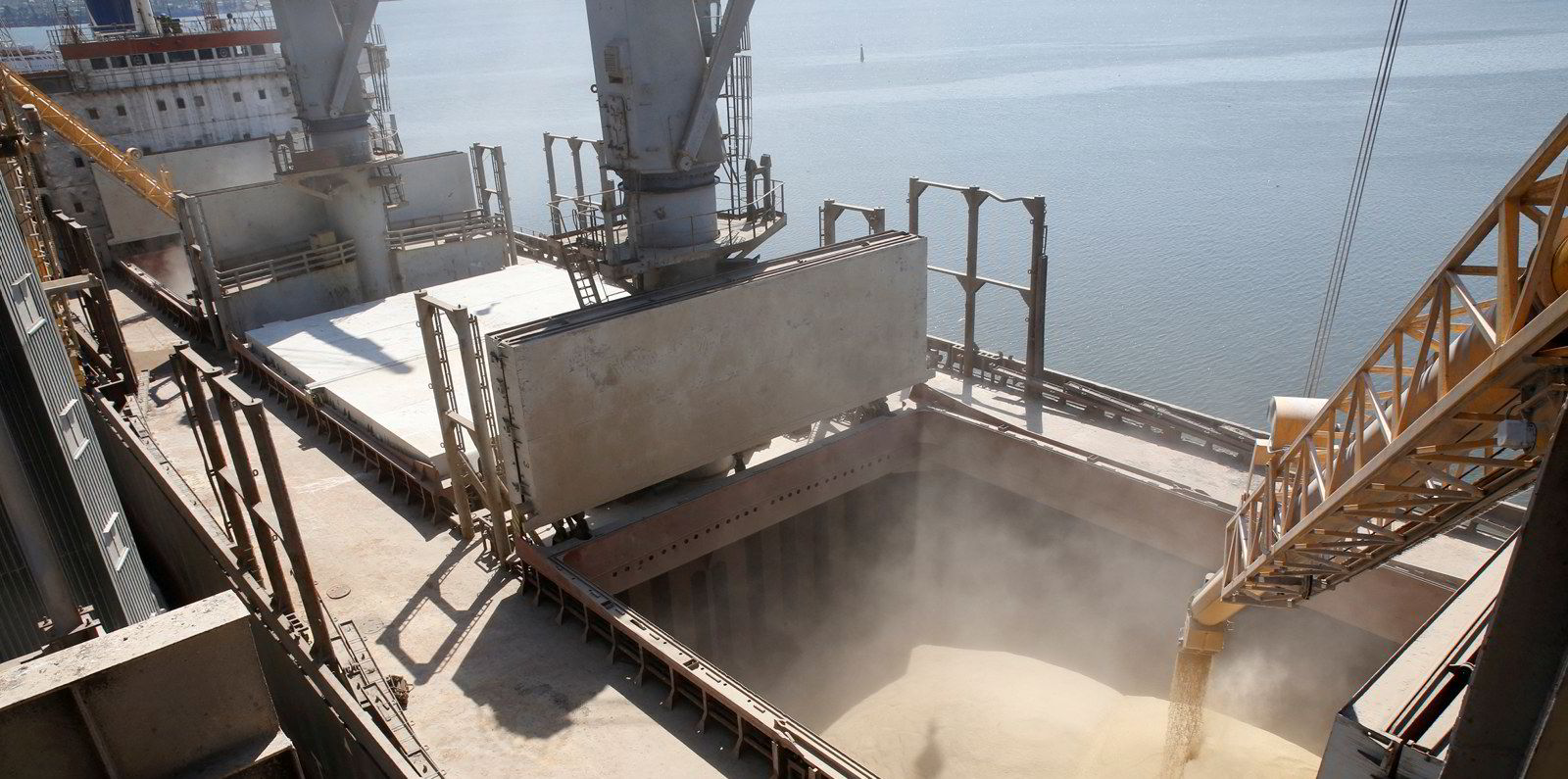Ukraine’s grain sector has begun the gargantuan task of getting the commodity to market without the use of the country’s major ports.
2022 had been expected to be a record-breaking year for Ukrainian grain and oilseed production. But the Ukrainian Grain Association (UGA) expects annual production to fall by 40% to about 63m tonnes this year, following Russia’s invasion.
But before this year’s harvest, which traditionally starts from June or July, the challenge is to work out how to export about 26m tonnes of grain that Ukraine has in stocks, which are worth up to $7bn at current prices.
Big grain trading houses are trying to arrange delivery by rail to transshipment ports such as Ust-Dunaisk and Izmail on the Danube for seaborne export from ports such as Constanta, Romania.
The UGA hopes that exports of grain will reach just over 35m tonnes in the 2022-2023 harvest season, down from 52.4m tonnes in the previous 12 months.
But logistical constraints are proving a big headache — there simply is not enough throughput capacity at transloading terminals and border crossings, plus a shortage of equipment.
“If we talk about the ports of Ust-Dunaisk and Izmail, for the moment in our expectation we can load there about 400,000 tonnes of grain — and we just started,” Nikolay Gorbachov, president of the UGA told a webinar last week.
“The biggest problem that we face, is a deficit of barges because most of our barges are blocked in Mykolaiv and Kherson and they will have to use European barges.”
Then there is the challenge of rail capacity. Gorbachov said European railway companies have been too scared to send trains to Ukraine during the war, so the government has issued a special decree that will cover any damage to foreign rail cars during the transport of grain from Ukraine.
Policymakers are working to cut paperwork and get trade moving with initiatives such as extending the validity of documentation like veterinary certificates for salmonella. This will give more time for grains to reach export ports before their paperwork expires, Gorbachov said.
The UGA president thinks that Ukraine’s monthly throughput capacity will triple from current levels to around 2m tonnes of grains within the next couple of months, down from 6m tonnes before the war.
He hopes that Ukraine will be able to export around 8m tonnes of grains over the next four months before the new season begins.
Ready or not?
Right now, big cargo owners such as ADM and Cargill are trying to arrange rail delivery of grain cargoes to Ukrainian ports on the Danube such as Reni, Izmail and Kiliya, according to Maksym Khaulin, director of dry cargo shipowner Intresco.
But these ports are not ready for large transshipment volumes of grain, despite a flurry of interest from companies in renting berths and equipment there, he told the webinar, which was hosted by Ukrainian law firm InterLegal.
“What is important now is the storage of cargo and the speed of loading. This is today number one — if you don’t provide 800 or 500 tonnes per hour then you will not be able to move all these huge quantities,” Khaulin said.
“So what the people are trying to do, they’re trying to move their cargoes from Kiliya, Reni and Izmail to Ruse [in Bulgaria], which is the worst option [as it is an an inland port].”
Seaborne exports would have to go from Constanta, which is operating at its limits.
“The stocks in Constanta are full. It’s very difficult for local companies there like Cofco, for example, to receive and store the cargo but they’re trying to do it,” he said.
Sea mines ‘fake news’
Russia’s battery of Ukraine has not just been with shells, but also with propaganda aimed at disrupting the nation’s valuable commodity trade, but it is no longer a case of whether Ukrainian ports will be deblockaded but when, Khaulin said.
“The biggest fake news story was about the mines which are in the Black Sea — were in the Black Sea. I would like only to say that I investigated this matter myself very deeply,” he said.
“Our company and also other shipowners, they were hesitating to call in the Black Sea — even Constanta, Burgas, Varna — just because they were thinking that Black Sea is full of mines.”
Turkey has mobilised vessels to clear the area and the Black Sea region is being monitored by air with help from Bulgaria and Romania, Khaulin said.





